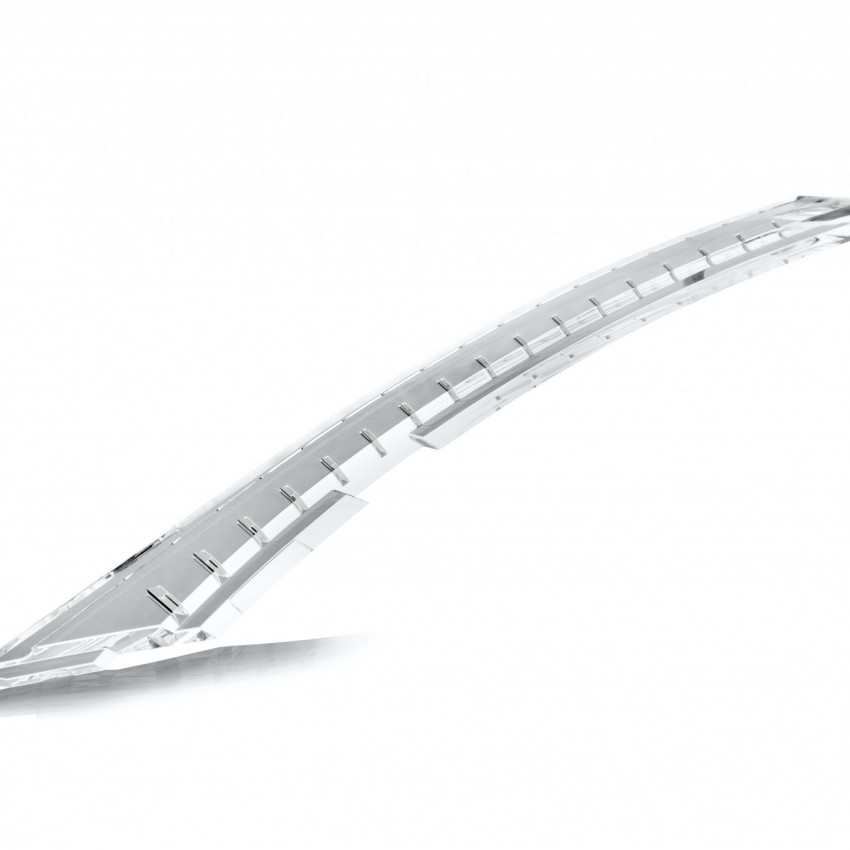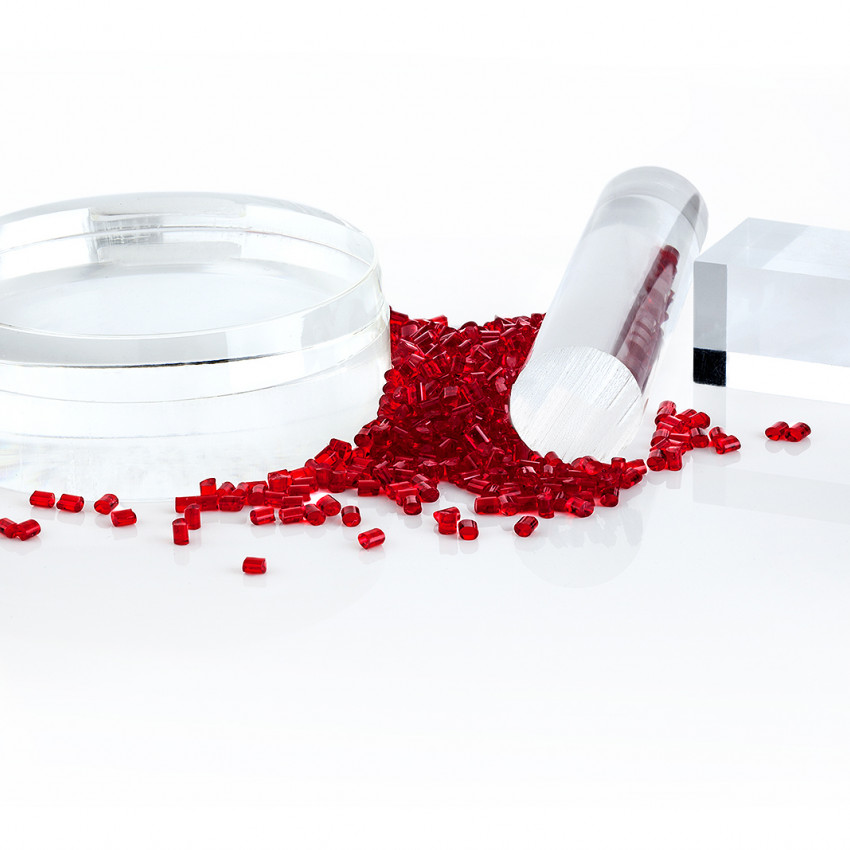Polymer opticsComponents for Complex Applications
Optical plastic components in precision
Plastics are replacing traditional materials in a wide variety of applications. This also applies to glass in optics. Whereas polymer optics used to be found in simple applications, today it is impossible to imagine various growth markets without them. They are integrated into highly complex applications; the possible uses are enormous. Optics made from transparent polymers offer many advantages: great design freedom, flexible moldability, high breaking resistance, low part weights, low material costs and economical series production.
As experts in plastic optics, we know the properties of transparent plastics inside out and push the limits of what is feasible in plastics technology. From optical development to design, prototype production, toolmaking, injection molding, optical coating and assembly, we cover the entire product development process in-house. With our fully and partially automated processes, we create future-orientated solutions for our customers and contribute to technological progress.

Plastic Optical Components from VIAOPTIC
Advantages of Plastic Optics
It is not without reason that plastic is considered to be the driver of many technological developments. Due to the special material properties, optics made of plastic offer more diverse possibilities compared to glass optics.
Optical plastics for individual applications
Material selection is crucial to the efficiency of any plastic optics and is therefore of fundamental importance. With their experience, our optics developers and plastics engineers will always find the optimal solution for your specific requirement, thus increasing your added value effectively.
The following table provides an initial overview of the properties of optical plastic materials.
The values are to be understood as a guide and may differ depending on the plastic supplier. Depending on the application, many other factors play a role.
We will support you in selecting the best material for your application.

| Material | Temperaturbeständigkeit (°C) | Dichte (g/cm³) | Brechzahl (n) | Abbe-Zahl |
|---|---|---|---|---|
| PMMA | Polymethyl methacrylate | 108 | 1,19 | 1,49 | 57 |
| PC | Polycarbonate | 137 | 1,2 | 1,58 | 34 |
| COP | Cycloolefin Polymer | 136 | 1,01 | 1,53 | 56 |
| COC | Cycloolefin Copolymer | 127 - 150 | 1,02 | 1,53 | 56 |
| SAN | Styrene Acrylonitrile | 99 | 1,08 | 1,569 | 37 |
| PMMI | Polymethyl methacrylimide | 140 | 1,21 | 1,53 | 41 |
| PC HT | Polycarbonate High Temperature | 165 -185 | 1,21 | 1,58-1,6 | 30 |
| PSU | Polysulfone | 181 | 1,38 | 1,65 | 23 |
| PA-xy | Polyamide | 145 | 1,02 | 1,52 | 52 |
| PC high n | Polycarbonate High Refractive | 125 - 135 | 1,25 | 1,66 | 20 |
| PET high n | Polyester High Refractive | 115 - 125 | 1,22 | 1,64 | 22 |










